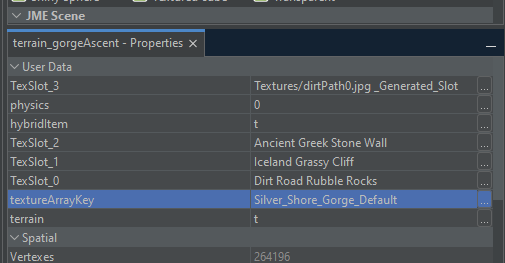Thanks for the screenshots and information! I will work on fixing it as soon as I can, and I’ll also make another thread soon for further testing and to see if anyone else has any ideas as to what can cause an issue that looks like this.
I currently would recommend using AdvancedPBRTerrain by default, and then if players lower a corresponding graphics options in your game’s settings you can convert back to the regular PBRTerrain that should be a bit faster.
But in the near future I will be adding some more optimization parameters to the AdvancedPBRTerrain shader so you can do things like enable triPlanar on a per-texture basis or cull layers easily, and this can be determined based on distance from camera and based on the graphics settings the player selected. So at that point the AdvancedPBRTerrain should be just as efficient as PBRTerrain and at that point I’d say AdvancedPBRTerrain should always be used in place of the regular one.
AdvancedPBRTerrain uses a TextureArray to bypass the 16 texture limit, so it is able to have higher detail from using a Metallic, Roughness, Ambient Occlusion, And EmissiveIntensity map, and you can use as many as your device can handle without lagging (which is why I’m working on params for easily adjusting this based on the game settings)
While the regular PBRTerrain just has a NormalMap and a regular albedo map because it will crash if there are more than 16 textures. Which means that the roughness and metallic values are only able to be set as floats, and specifically the lack of a detailed roughness maps ends up in unrealistically smooth reflecivity with this shader.
So the biggest visible difference is that AdvancedPBRTerrain can have much more realistic and detailed reflectivity and shininess.
